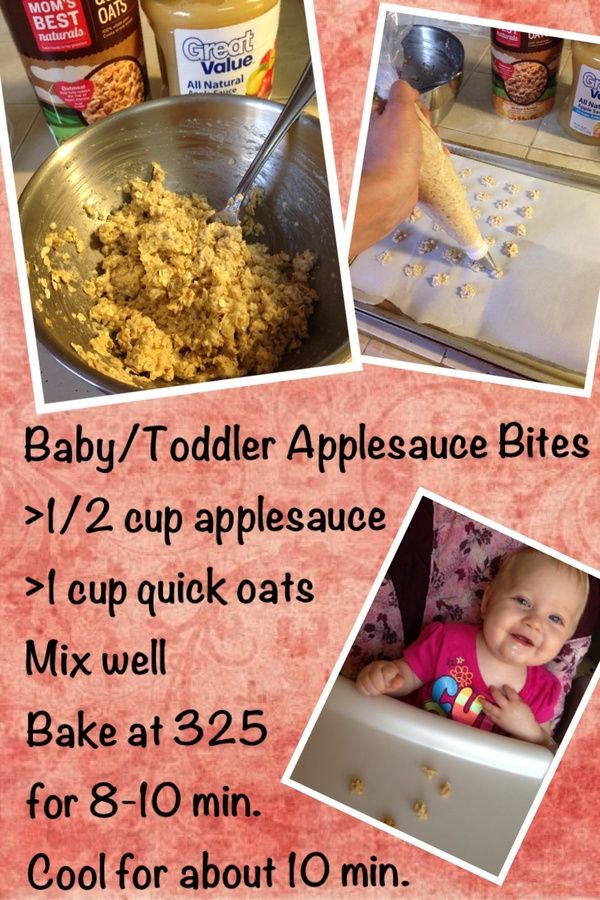How often to feed 6 month old baby solids
Feeding your baby: 6–12 months
At 6 months of age, breastmilk continues to be a vital source of nutrition; but it’s not enough by itself. You need to now introduce your baby to solid food, in addition to breastmilk, to keep up with her growing needs.
Be sure you give your baby her first foods after she has breastfed, or between nursing sessions, so that your baby continues to breastfeed as much as possible.
When you start to feed your baby solid food, take extra care that she doesn’t become sick. As she crawls about and explores, germs can spread from her hands to her mouth. Protect your baby from getting sick by washing your and her hands with soap before preparing food and before every feeding.
Your baby's first foods
When your baby is 6 months old, she is just learning to chew. Her first foods need to be soft so they’re very easy to swallow, such as porridge or well mashed fruits and vegetables. Did you know that when porridge is too watery, it doesn't have as many nutrients? To make it more nutritious, cook it until it’s thick enough not to run off the spoon.
Feed your baby when you see her give signs that she's hungry – such as putting her hands to her mouth. After washing hands, start by giving your baby just two to three spoonfuls of soft food, twice a day. At this age, her stomach is small so she can only eat small amounts at each meal.
The taste of a new food may surprise your baby. Give her time to get used to these new foods and flavours. Be patient and don’t force your baby to eat. Watch for signs that she is full and stop feeding her then.
As your baby grows, her stomach also grows and she can eat more food with each meal.
Feeding your baby: 6–8 months old
From 6–8 months old, feed your baby half a cup of soft food two to three times a day. Your baby can eat anything except honey, which she shouldn't eat until she is a year old. You can start to add a healthy snack, like mashed fruit, between meals. As your baby gets increasing amounts of solid foods, she should continue to get the same amount of breastmilk.
Feeding your baby: 9–11 months old
From 9–11 months old, your baby can take half a cup of food three to four times a day, plus a healthy snack. Now you can start to chop up soft food into small pieces instead of mashing it. Your baby may even start to eat food herself with her fingers. Continue to breastfeed whenever your baby is hungry.
Each meal needs to be both easy for your baby to eat and packed with nutrition. Make every bite count.
Foods need to be rich in energy and nutrients. In addition to grains and potatoes, be sure your baby has vegetables and fruits, legumes and seeds, a little energy-rich oil or fat, and – especially – animal foods (dairy, eggs, meat, fish and poultry) every day. Eating a variety of foods every day gives your baby the best chance of getting all the nutrients he needs.
If your baby refuses a new food or spits it out, don’t force it. Try again a few days later. You can also try mixing it with another food that your baby likes or squeezing a little breastmilk on top.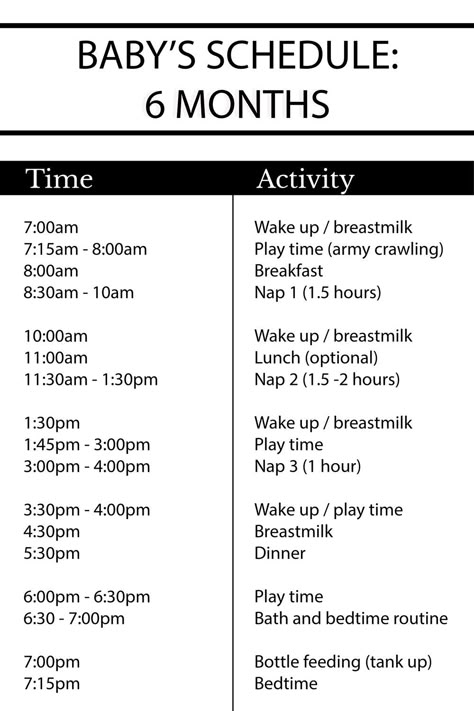
Feeding non-breastfed babies
If you're not breastfeeding your baby, she’ll need to eat more often. She'll also need to rely on other foods, including milk products, to get all the nutrition her body needs.
- Start to give your baby solid foods at 6 months of age, just as a breastfed baby would need. Begin with two to three spoonfuls of soft and mashed food four times a day, which will give her the nutrients she needs without breastmilk.
- From 6–8 months old, she’ll need half a cup of soft food four times a day, plus a healthy snack.
- From 9–11 months old, she’ll need half a cup of food four to five times a day, plus two healthy snacks.
How Many Times a Day Should I Feed Solids to My 6 Month Old?
740 shares
It’s a common question from moms everywhere – How many times a day should I feed solids to my 6 month old?
Starting to feed your baby solid food is an exciting milestone! Many parents can’t wait to get started.
But how do you begin? When should you start introducing? How much should they be eating?
While it can all seem overwhelming, it certainly doesn’t have to be. While introducing can be fun, at this age most of your baby’s nutrition is still coming from milk (whether it be formula or breast milk).
We’ll go over some of the most frequently asked questions to get you started.
Disclaimer: This page contains affiliate links. See our disclosure policy for more details.
In This Guide:
How Many Times a Day Should I Feed Solids to My 6 Month Old?
Most 6 month old babies eat solids once or twice per day.
This depends on several factors, including when you introduce solids and how well your baby takes to them. Typically, solids are introduced at 1 meal per day, so if you are starting solids at 6 months, you’ll start there. If you began solids earlier at 4 or 5 months, your 6 month old may be eating twice in a day.
At 6 months old, your baby is still getting their nutrition primarily from formula or breast milk.
Also, it’s generally recommended to introduce foods one at a time and repeat them for a few days so you can pinpoint the source if your baby has an allergic reaction. So starting out with one feeding per day makes this easier.
RELATED Purées vs. Baby-led Weaning – Which is Better?
How Much Solids Should I Give My 6 Month Old?
At 6 months of age, your baby can eat 2-4 tablespoons of solid food per day.
They still have tiny stomachs at this age, they don’t need much. And you want to leave room because their nutrition is still coming primarily from formula or breast milk at 6 months old.
Try the same food for three days in a row before introducing something new. This makes sure your child doesn’t have any allergies or sensitivities to the food that has been introduced.
When Should I Introduce Water to My Baby?
You may start giving your baby water at 6 months old, however it isn’t necessary at that point.
Many moms like to introduce small sips of water during meal times with a miracle cup, straw, or sippy cup.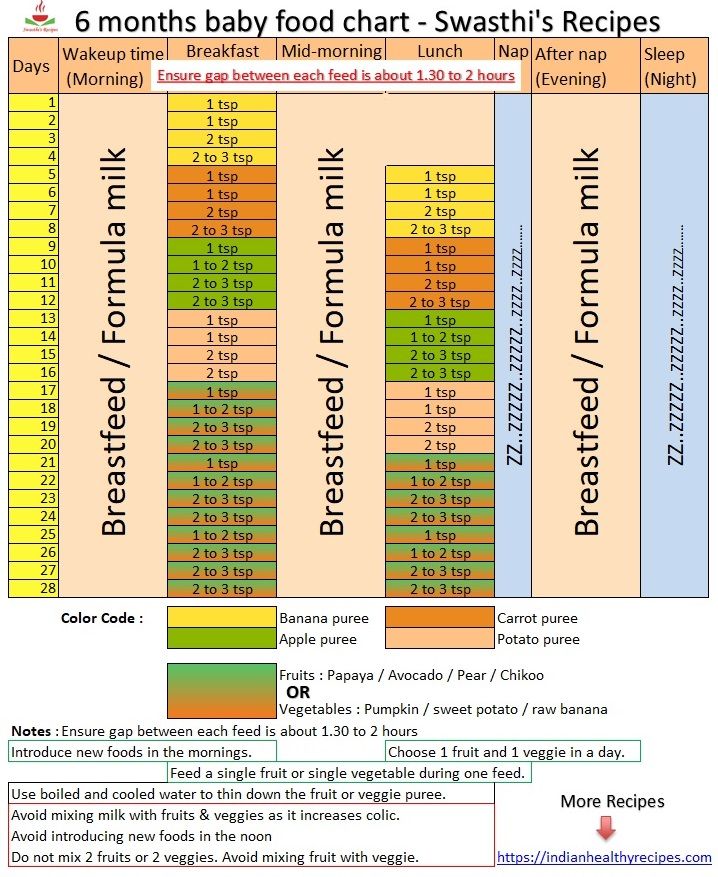 At this age, don’t let them drink more than one ounce during a sitting, and max two ounces throughout the day.
At this age, don’t let them drink more than one ounce during a sitting, and max two ounces throughout the day.
Even on hot days, as long as your baby is regularly drinking their formula or breast milk, they don’t need additional water at 6 months old.
What Finger Foods Can I Give My 6-Month-Old?
Think soft, chewable feeds that your baby can easily pick up.
- Sliced avocado
- Steamed carrots, cut lengthwise
- Banana chunks
- Cut tofu
- Steamed parsnips cut into chunks
- Halved blueberries
- Squished beans
- Cut tomato
- Small pieces of bread or pancake
- Pear slices
- Steamed sweet potato cut into chunks
- Cooked green beans
- Steamed broccoli
- Baked fish (bones removed!)
- Chunks of hard boiled eggs
What Is a Good Feeding Schedule for a 6 Month Old?
There isn’t one right feeding schedule for a 6 month old. The best schedule depends on your specific circumstances, so you’ll want to figure out what works for your family.
The best schedule depends on your specific circumstances, so you’ll want to figure out what works for your family.
This is just one example of a baby feeding schedule, 6 months.
| 6:30 am | Milk feed |
| 7:00 am | Get dressed and play |
| 9:00 am | Nap |
| 10:00 am | Milk feed |
| 10:30 am | Play |
| 11:00 am | Solids lunch |
| 11:30 am | Go for a walk |
| 12:30 pm | Nap |
| 2:00 pm | Milk feed |
| 2:30 pm | Play |
| 4:30 pm | Milk feed |
| 5:30 pm | Solids dinner |
| 6:30 pm | Start bedtime routine – bath, PJs, books |
| 7:00 pm | Milk feed |
| 7:30 pm | Bed |
Remember, you should figure out a time that works best for your family. Don’t overthink it too much – as they say, “foods before one are just for fun”.
Don’t overthink it too much – as they say, “foods before one are just for fun”.
Here are some things to keep in mind when trying to figure out a good feeding schedule for your 6 month old:
- Most 6 month old babies are feeding every 3 to 4 hours and taking 2 or 3 naps. Find the most convenient time to add in solids once each day and increase from there.
- Solids should not replace a feeding yet.
- Solids should be given at a time when the baby is very alert and, ideally, in a good mood. Depending on your schedules this could be at any time, but many people prefer to start out giving solids early in the day to allow plenty of time to observe for a reaction.
- If it’s tough to find a perfect schedule, don’t worry too much. This time passes quickly and your baby’s schedule will soon change again. Just keep trying.
When Should Baby Eat 3 Meals a Day?
Most babies slowly increase the amount they are eating and begin eating solids three times per day between 10 and 12 months of age.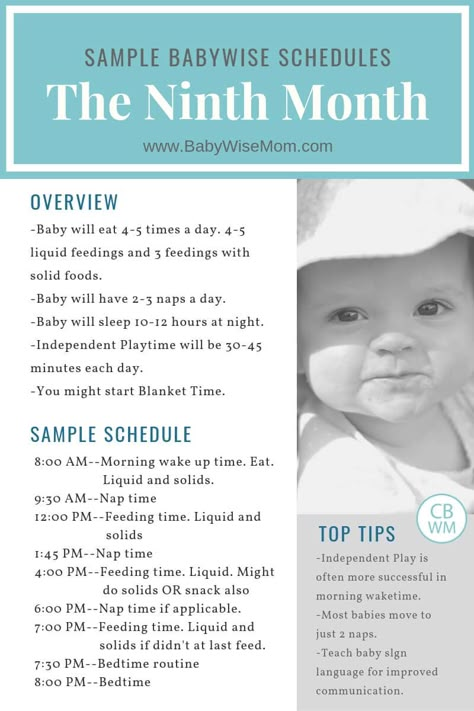
They still aren’t full meals at this point, because a lot of their nutrition is still coming from breast milk or formula. Rather they are slowly transitioning from a milk-based diet to solid food and this gets them in the habit of eating regularly.
Can You Feed a 6 Month Old Too Much Solids?
It is considered uncommon to overfeed a baby though not impossible.
Take care to watch your baby for cues that they’re full. If they aren’t interested or are turning away, they may not be hungry.
How Do I Know When My Baby Is Full on Solids?
It can be challenging with easily distracted babies to know, but don’t try to force food.
Keep in mind again, that at 6 months, your baby is still getting most of their nutrition from breast milk or formula. The baby won’t eat enough solids to meet their nutritional needs, but overfeeding solids could mean they take less formula or breast milk than they should. For this reason, it’s generally recommended to give solids to your baby a little after their usual feeding, so they are still getting everything they need.
We hope this is a helpful resource to get you started and answers the question: how many times a day should i feed solids to my 6 month old?
And we also want to point out that if your baby isn’t interested in solids at 6 months, that’s perfectly okay too. Some babies take longer to get started than others. Jo’s second child didn’t even start eating solids until 8 months! Now she’s 5 and never stops eating.
How has your journey with introducing solid food been? Tell us about it in the comments!
740 shares
About Author
Jo & Rachel
Jo and Rachel first had the idea for 'The Moms At Odds' in 2016 when our babies were turning 2 and we realized that we were very different parents.
As a mom, Rachel immediately felt this strong connection to her son and instantly decided she wanted to become a stay-at-home mom. Though Jo obviously loved her son as well, she counted the days until she could go back to work and interact with other adults.
They both struggled over getting their babies to sleep and while Jo believed in sleep training, Rachel looked for alternatives like dream feeding and no cry methods. As time passed and their children grew older the differences started to really add up – pacifier use, drinking during breastfeeding, organic foods, screen time, diaper brands, and on and on.
During this day and age, it’s so easy to look at our parenting differences as a bad thing. After all, we’ve all seen jokes and articles about “Mommy Wars” over one subject or another. Instead, we choose to embrace our differences and show you that in many areas there is no wrong answer. What works for one family may not work for another, and that’s perfectly fine. We can still all get along and raise perfectly healthy, beautiful children.
Related Posts
-
8 May 2018
-
14 February 2018
-
23 June 2021
behind the moms at odds
This site is dedicated to all of us trying to figure this parenting thing out. We’re here to explore different parenting methods and decisions, weigh the pros and cons, and ultimately help you decide on the best option for your family. Read more about us here
We’re here to explore different parenting methods and decisions, weigh the pros and cons, and ultimately help you decide on the best option for your family. Read more about us here
Stay Up-To-Date
Top Posts
How to Make the Best Stay at Home Mom Schedule
Are you trying to figure out a stay at home mom schedule that works for you?
Shares: 25857
Birthday Traditions to Make Your Kid Feel Special
Every child deserves to feel special on their birthday! It's never too early to start some annual birthday traditions.
Shares: 17432
Easy & Delicious 2-Ingredient Pumpkin Muffins
If the Thanksgiving holiday has you in the mood for pumpkin or you need a last-minute snack to share, this pumpkin muffins recipe is perfect for you.
Shares: 222714
Search for:Complementary foods at 6 months | Useful tips from the Tyoma brand
Pediatricians around the world, including experts from the World Health Organization, unanimously believe that the introduction of complementary foods should be carried out in the interval of 4-6 months.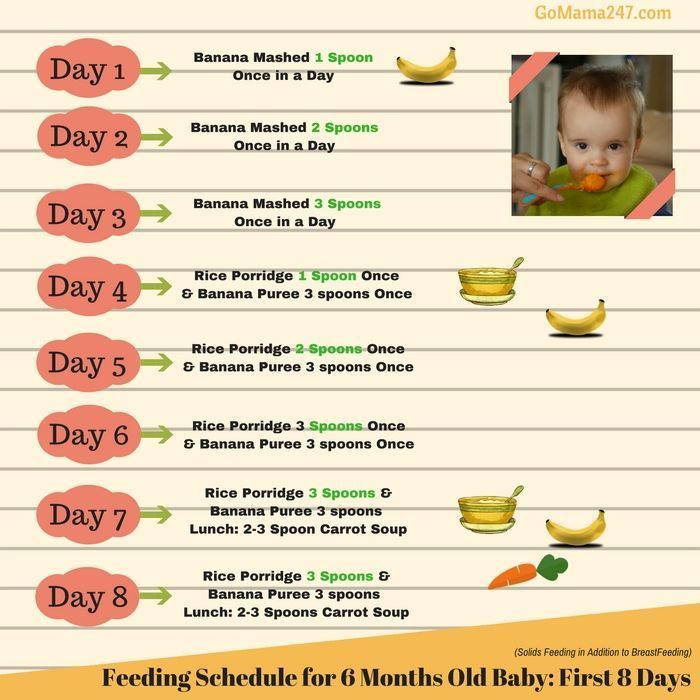
Early introduction of complementary foods (up to 4 months). fraught with the development of allergic reactions and indigestion.
Late introduction of complementary foods, from 7 months, can lead to a deficiency in the child's diet of essential nutrients, an iron deficiency state at the age of 9-10 months, eating disorders, delayed development of chewing skills and swallowing of thick foods.
With the normal development of the child and the absence of signs of iron deficiency anemia, complementary foods can be introduced from 6 months. This applies to both formula-fed and breast-fed babies.
Signs that a baby is ready to breastfeed include
- Absence of the spoon-ejection reflex
- the presence of a bright food interest in the baby to the food of adults nine0014
It is important to remember that a child’s lack of teeth and the ability to sit are not signs of a baby’s unpreparedness for eating thick food.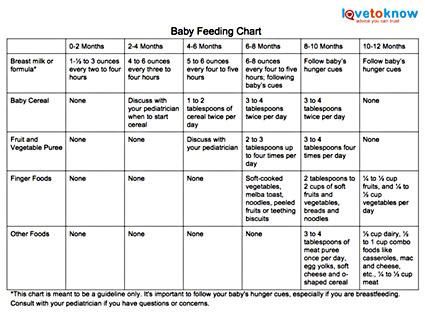
It is very important to understand the main goals of the introduction of complementary foods:
- Provide the child with the necessary nutrients.
- Develop a child's food interest, introduce him to new tastes.
In no case should the introduction of complementary foods be of a violent nature, since this will not only not contribute to the development of a child’s food interest, but can also lead to a complete refusal of the baby from complementary foods, which will destroy the main goals of complementary foods. nine0003
How to start introducing complementary foods at 6 months of age?
The first product of complementary foods, regardless of the start date of the introduction of complementary foods and the type of feeding of the baby (breast or artificial), should be energy-intensive foods: porridge, or vegetable puree.
If the child has a liquefied or unstable stool, and there is also a lack of body weight, then it is better to choose porridge as the first complementary food. After 3-4 days from the beginning of the introduction of porridge, butter can be gradually added to it (up to 5 g per serving of porridge in 150 g) nine0003
After 3-4 days from the beginning of the introduction of porridge, butter can be gradually added to it (up to 5 g per serving of porridge in 150 g) nine0003
If the child has a tendency to constipation, then it is better to choose vegetable marrow puree as the first complementary food, which can have a mild laxative effect on the child's stool. Starting from the 3-4th day of the introduction of vegetable puree, vegetable oil can be gradually added to it (up to 5 g per serving of vegetables in 150 g)
What products are better to give preference to at 6 months?
Kashi
The first cereals can be buckwheat, rice or corn. They must be dairy-free and can be diluted with water or breast milk, or the mixture that the baby eats. Later, you can introduce oatmeal and millet porridge nine0003
Vegetables
The first vegetable puree can be zucchini, broccoli, or cauliflower. Later, kohlrabi, potatoes, green beans, white cabbage, green peas, celery can be introduced into the diet.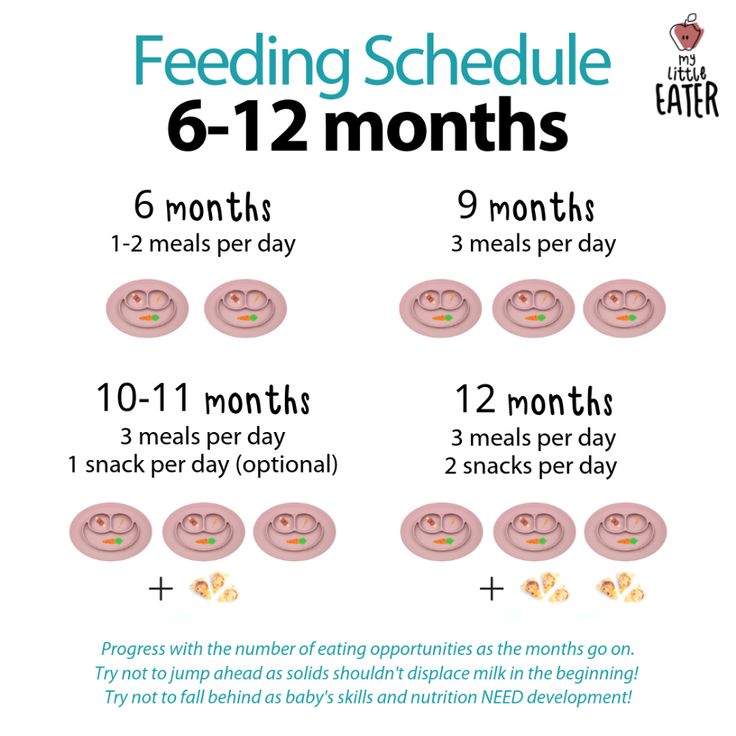
Fruit
The third type of complementary foods can be fruit puree from apples, pears or bananas. Later, you can introduce mashed apricot, peach. For starters, fruit puree may not be given to the child separately, but it is better to mix it with cereal or vegetables so that the child does not begin to prefer the sweet taste of fruits. When the amount of fruit puree reaches 50 g or more, it can also be given separately, for example, after the child has eaten porridge or cottage cheese. nine0003
Juices
Juices should not be the first feeding, in addition, they can not be introduced into the baby's first year of life at all, given their sweet taste and low nutritional value.
Basic rules for the introduction of complementary foods from 6 months
- A faster introduction of the main complementary foods into the child's diet compared to their introduction from 4 or 5 months, namely, bringing the amount of one product to the age volume can be carried out in 5-7 days.
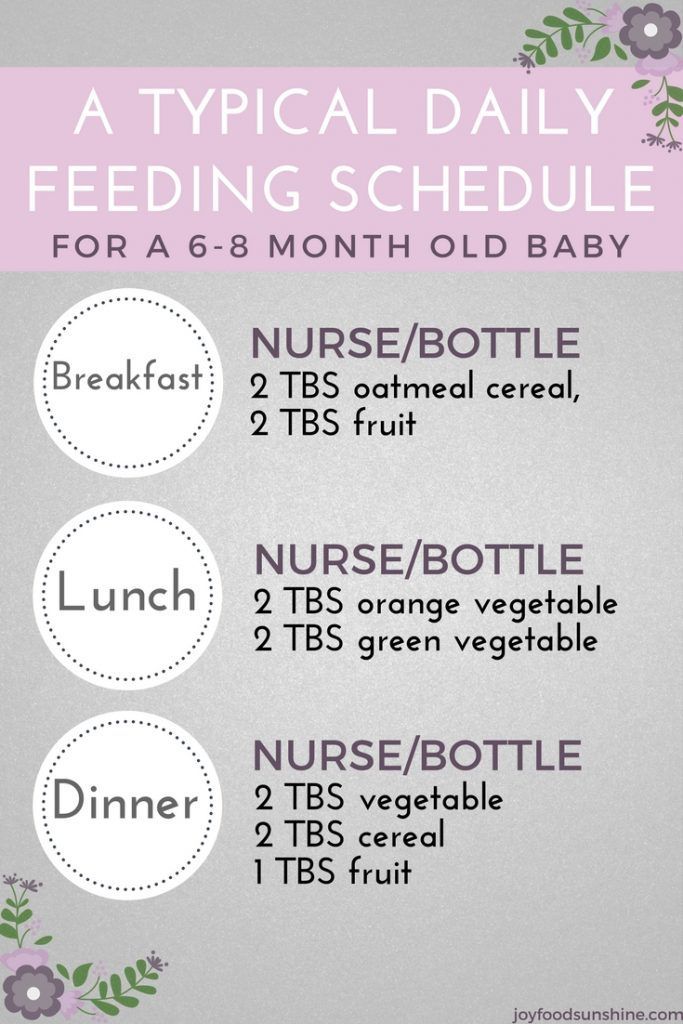 nine0014
nine0014 - Introduction of complementary foods before breastfeeding or formula.
- Feeding the child is carried out not at the request of the child, but at the request of the mother. What it means: you should try to introduce complementary foods regularly and at the same time, allocating for this conditionally time for the future breakfast, lunch and dinner (afternoon snack).
How to start the introduction of a new product?
The introduction of a new product should be gradual. nine0003
- On day 2 - 3 tsp. (15 g)
- On day 3 - 6 tsp. (30 g)
- Day 4 - 50 g
- Day 5 - 100 g
- On the 7th day - 150 g
Important!
If on the 5-7th day of the introduction of a new product, the baby still cannot eat 100-150 ml of porridge or puree at once, then this amount can be divided into 2 doses, for example, give 100 ml of porridge in the morning and 50 ml in the evening. nine0003
nine0003
From the second week of the introduction of a new product, one milk feeding can be completely replaced with complementary foods.
Approximate weekly feeding schedule
If we start complementary foods with vegetable puree, then the schedule might look something like this:
- Morning feeding (6:00 am): breast milk or infant formula 180-200 ml
- Breakfast (10:00): breast milk or infant formula 180-200 ml nine0014
- Lunch (14:00): broccoli 10-150 grams. Supplementing with breast milk or infant formula
- Afternoon snack (18:00): breast milk or infant formula 180-200 ml
- Night feeding (22:00): breast milk or infant formula 180-200 ml
2 weeks
From the second week, you need to start introducing dairy-free porridge.
- Morning feeding (6:00 am): breast milk or infant formula 180-200 ml nine0014
- Breakfast (10:00): porridge 10-150 g, supplemented with breast milk or infant formula
- Lunch (14:00): Broccoli 150 grams.
 Vegetable oil 5 g Supplementary feeding with breast milk or infant formula up to 50 ml
Vegetable oil 5 g Supplementary feeding with breast milk or infant formula up to 50 ml - Afternoon snack (18:00): breast milk or infant formula 180-200 ml
- Night feeding (22:00): breast milk or infant formula
3 week nine0003
From the third week, you need to start introducing meat puree, which is most convenient to add to vegetable puree
- Morning feeding (6:00 am): breast milk or infant formula 180-200 ml
- Breakfast (10:00): porridge 150 g, supplemented with breast milk or infant formula
- Lunch (14:00): Broccoli 150 grams. Vegetable oil 5 g Meat puree 5-20 g Supplementation with breast milk or infant formula up to 50 ml nine0014
- Afternoon snack (18:00): breast milk or infant formula 180-200 ml
- Night feeding (22:00): breast milk or infant formula
4 week
From the fourth week, you can introduce fruit puree, which is most convenient to add to porridge
- Morning feeding (6:00 am): breast milk or infant formula 180-200 ml
- Breakfast (10:00): porridge 150 g, fruit puree up to 50 g nine0014
- Lunch (14:00): Broccoli 150 grams.
 Vegetable oil 5 g Meat puree 20 g Supplementation with breast milk or infant formula
Vegetable oil 5 g Meat puree 20 g Supplementation with breast milk or infant formula - Afternoon snack (18:00): breast milk or infant formula 180-200 ml
- Night feeding (22:00): breast milk or infant formula
From the fifth week, you can begin to introduce the second type of porridge, which is most convenient to start adding to the first type, gradually displacing its amount. nine0003
From the sixth week, you can enter another type of vegetable puree. Etc.
By 7 months two milk feedings can be completely replaced with complementary foods.
Complementary foods at 6 months | Useful tips from the Tyoma brand
Pediatricians around the world, including experts from the World Health Organization, unanimously believe that the introduction of complementary foods should be carried out in the interval of 4-6 months.
Early introduction of complementary foods (up to 4 months). fraught with the development of allergic reactions and indigestion. nine0003
fraught with the development of allergic reactions and indigestion. nine0003
Late introduction of complementary foods, from 7 months, can lead to a deficiency in the child's diet of essential nutrients, iron deficiency at the age of 9-10 months, eating disorders, delayed development of chewing skills and swallowing of solid food.
With the normal development of the child and the absence of signs of iron deficiency anemia, complementary foods can be introduced from 6 months. This applies to both formula-fed and breast-fed babies.
Signs that a baby is ready to breastfeed include nine0003
- Absence of the spoon-ejection reflex
- the presence of a bright food interest in the baby to the food of adults
It is important to remember that a child’s lack of teeth and the ability to sit are not signs of a baby’s unpreparedness for eating thick food.
It is very important to understand the main goals of the introduction of complementary foods:
- Provide the child with the necessary nutrients.
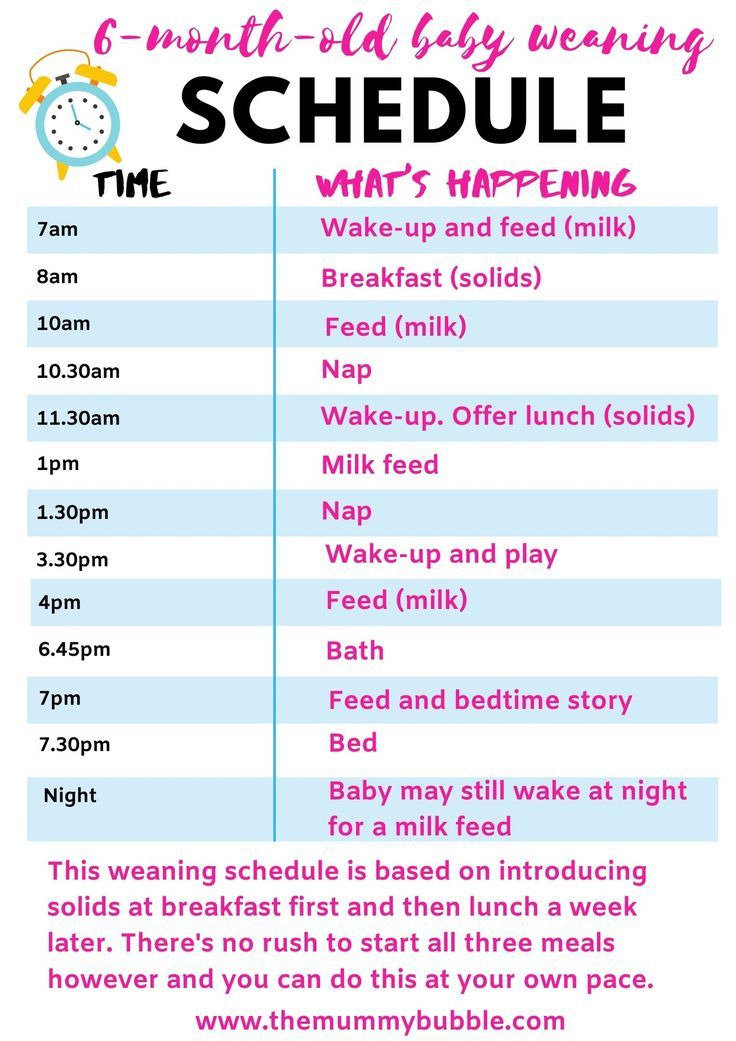
- Develop a child's food interest, introduce him to new tastes. nine0014
In no case should the introduction of complementary foods be of a violent nature, since this will not only not contribute to the development of a child’s food interest, but can also lead to a complete refusal of the baby from complementary foods, which will destroy the main goals of complementary foods.
How to start introducing complementary foods at 6 months of age?
The first product of complementary foods, regardless of the start date of the introduction of complementary foods and the type of feeding of the baby (breast or artificial), should be energy-intensive foods: porridge, or vegetable puree. nine0003
If the child has a liquefied or unstable stool, and there is also a lack of body weight, then it is better to choose porridge as the first complementary food. After 3-4 days from the beginning of the introduction of porridge, butter can be gradually added to it (up to 5 g per serving of porridge in 150 g)
If the child has a tendency to constipation, then it is better to choose vegetable marrow puree as the first complementary food, which can have a mild laxative effect on the child's stool. Starting from the 3-4th day of the introduction of vegetable puree, vegetable oil can be gradually added to it (up to 5 g per serving of vegetables in 150 g) nine0003
Starting from the 3-4th day of the introduction of vegetable puree, vegetable oil can be gradually added to it (up to 5 g per serving of vegetables in 150 g) nine0003
What products are better to give preference to at 6 months?
Kashi
The first cereals can be buckwheat, rice or corn. They must be dairy-free and can be diluted with water or breast milk, or the mixture that the baby eats. Later, you can introduce oatmeal and millet porridge
Vegetables
The first vegetable puree can be zucchini, broccoli, or cauliflower. Later, kohlrabi, potatoes, green beans, white cabbage, green peas, celery can be introduced into the diet. nine0003
Fruit
The third type of complementary foods can be fruit puree from apples, pears or bananas. Later, you can introduce mashed apricot, peach. For starters, fruit puree may not be given to the child separately, but it is better to mix it with cereal or vegetables so that the child does not begin to prefer the sweet taste of fruits. When the amount of fruit puree reaches 50 g or more, it can also be given separately, for example, after the child has eaten porridge or cottage cheese.
When the amount of fruit puree reaches 50 g or more, it can also be given separately, for example, after the child has eaten porridge or cottage cheese.
Juices nine0041
Juices should not be the first feeding, in addition, they can not be introduced into the baby's first year of life at all, given their sweet taste and low nutritional value.
Basic rules for the introduction of complementary foods from 6 months
- A faster introduction of the main complementary foods into the child's diet compared to their introduction from 4 or 5 months, namely, bringing the amount of one product to the age volume can be carried out in 5-7 days. nine0013 Introduction of complementary foods before breastfeeding or formula.
- Feeding the child is carried out not at the request of the child, but at the request of the mother. What it means: you should try to introduce complementary foods regularly and at the same time, allocating for this conditionally time for the future breakfast, lunch and dinner (afternoon snack).

How to start the introduction of a new product?
The introduction of a new product should be gradual. nine0003
- On day 2 - 3 tsp. (15 g)
- On day 3 - 6 tsp. (30 g)
- Day 4 - 50 g
- Day 5 - 100 g
- On the 7th day - 150 g
Important!
If on the 5-7th day of the introduction of a new product, the baby still cannot eat 100-150 ml of porridge or puree at once, then this amount can be divided into 2 doses, for example, give 100 ml of porridge in the morning and 50 ml in the evening. nine0003
From the second week of the introduction of a new product, one milk feeding can be completely replaced with complementary foods.
Approximate weekly feeding schedule
If we start complementary foods with vegetable puree, then the schedule might look something like this:
- Morning feeding (6:00 am): breast milk or infant formula 180-200 ml
- Breakfast (10:00): breast milk or infant formula 180-200 ml nine0014
- Lunch (14:00): broccoli 10-150 grams.
 Supplementing with breast milk or infant formula
Supplementing with breast milk or infant formula - Afternoon snack (18:00): breast milk or infant formula 180-200 ml
- Night feeding (22:00): breast milk or infant formula 180-200 ml
2 weeks
From the second week, you need to start introducing dairy-free porridge.
- Morning feeding (6:00 am): breast milk or infant formula 180-200 ml nine0014
- Breakfast (10:00): porridge 10-150 g, supplemented with breast milk or infant formula
- Lunch (14:00): Broccoli 150 grams. Vegetable oil 5 g Supplementary feeding with breast milk or infant formula up to 50 ml
- Afternoon snack (18:00): breast milk or infant formula 180-200 ml
- Night feeding (22:00): breast milk or infant formula
3 week nine0003
From the third week, you need to start introducing meat puree, which is most convenient to add to vegetable puree
- Morning feeding (6:00 am): breast milk or infant formula 180-200 ml
- Breakfast (10:00): porridge 150 g, supplemented with breast milk or infant formula
- Lunch (14:00): Broccoli 150 grams.
 Vegetable oil 5 g Meat puree 5-20 g Supplementation with breast milk or infant formula up to 50 ml nine0014
Vegetable oil 5 g Meat puree 5-20 g Supplementation with breast milk or infant formula up to 50 ml nine0014 - Afternoon snack (18:00): breast milk or infant formula 180-200 ml
- Night feeding (22:00): breast milk or infant formula
4 week
From the fourth week, you can introduce fruit puree, which is most convenient to add to porridge
- Morning feeding (6:00 am): breast milk or infant formula 180-200 ml
- Breakfast (10:00): porridge 150 g, fruit puree up to 50 g nine0014
- Lunch (14:00): Broccoli 150 grams. Vegetable oil 5 g Meat puree 20 g Supplementation with breast milk or infant formula
- Afternoon snack (18:00): breast milk or infant formula 180-200 ml
- Night feeding (22:00): breast milk or infant formula
From the fifth week, you can begin to introduce the second type of porridge, which is most convenient to start adding to the first type, gradually displacing its amount.







